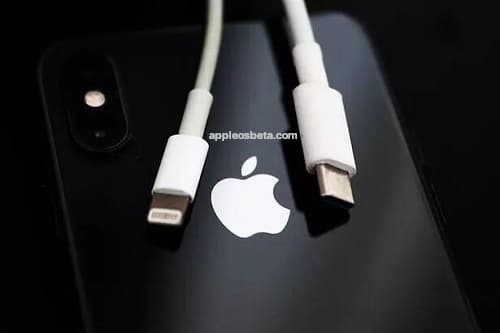Apple confirms: USB-C will arrive on iPhone. For the first time since the EU has established a requirement to use the USB-C port on smartphones, Apple has confirmed that it will have to comply with this new legislation, despite the company still fundamentally disagreeing with the basics of the new. universal charger regulation.
Clean energy attack from Apple!
The confirmation came from Greg Joswiak, Apple’s senior vice president of Worldwide Marketing. He and Craig Federighi, Apple’s senior vice president, were interviewed by Joanna Stern at a Wall Street Journal event. Stern kicked off the interview with a question about the USB-C versus Lightning debate.
Joswiak explained that USB-C and Lightning are the two most popular connectors in the world, with over a billion people using a Lightning cable of some kind. According to Joswiak, Apple is convinced that they have found a balance by using a type of cable that can be disconnected from the power brick, which means that one side can have Lightning and the other can have any type of connector that is more convenient for the user. , such as USB-C or USB-A.
Joswiak said EU and Apple lawmakers had a small disagreement over the idea of a common regulation for chargers. The executive noted that, despite the EU’s good intentions, regulation is complicated. In particular, he points out that EU legislators had also tried to standardize the micro-USB connector, which is now obsolete.
Eventually, though, Joswiak confirmed that Apple will have no choice but to comply with the new EU regulation on common chargers with USB-C. Barring surprises, the iPhone 15 should already integrate the USB-C port.
Federighi and Joswiak then talked about the pace of iPhone innovation, the question of whether smartphones have become boring or not and whether the iPhone needs an update every year. “People are very excited about the new iPhones,” Joz said, referring to the new features of the iPhone 14 Pro, including the new 48MP camera and Dynamic Island. “We always have a ton of things that we have to get out,” Federighi said. “We’ve been working on these things for years and years, and there are a number of features that we believe can best help our customers.”
As for why iPadOS still lacks a native application for calculators, Joz said: “There are a lot of them. Go to the App Store “. “I use third-party applications,” he continued when Joanna Stern of the Wall Street Journal asked him what the two executives do when they want to calculate something on their iPad.
Federighi and Joz were also asked about the lack of iMessage on Android and the reason that drives Apple to keep iMessage exclusive to Apple devices. Federighi was asked about an e-mail sent in 2013 in which he stated: “I am concerned that iMessage on Android simply serves to remove an obstacle to families who use iPhone to give their children Android phones”.
“If we want to enter a market and embark on the path of building an application, we must do it in a way that makes a difference, which allows us to have many customers and an excellent experience,” Federighi said. “If we had simply deployed an app that hasn’t reached critical mass on other platforms, what it would have meant is that it would have prevented us from innovating in all the ways we want to innovate in messaging for our customers and it would not have achieved great results. in no other way “, Federighi explained. “IMessage on Android wouldn’t have helped the world,” he concluded.

